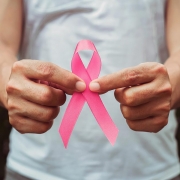Cervical Cancer: How it can be Prevented and Treated
January was Cervical Cancer Awareness Month — and awareness has played a big role in its shift from the leading cause of death among women in the United States to the most preventable of female cancers. This is due largely to the emphasis placed on annual screenings and the emergence of vaccines for the human papilloma virus (HPV), the primary cause of cervical cancer.
While this progress is encouraging, more than 14,000 women are still expected to be diagnosed with cervical cancer in the U.S. in 2021, and more than 4,000 will die. Which is why it is so important to continue educating women — and men — about cervical cancer and how to prevent it.
Causes and Symptoms
The main cause of cervical cancer is HPV, a sexually transmitted disease that infects about 14 million men and women in the U.S. each year. Smoking, multiple sexual partners and taking oral contraceptives for longer than five years can also increase a woman’s risk.
Symptoms of cervical cancer include pelvic pain, abnormal discharge and abnormal periods, fatigue, nausea, weight loss and pain during intercourse. It is also very common for women not to have any symptoms at all, which is why keeping up with annual screenings is so important.
Preventative Measures
The most effective measure in guarding against cervical cancer is an annual Pap smear test, a procedure that involves collecting cells from the cervix and analyzing them for the presence of precancerous or cancerous cells. These annual screenings are crucial because cervical cancer, when diagnosed in the early stages, is very treatable. Too often, by the time symptoms present themselves, the cancer has already metastasized to other areas of the body.
Another effective measure is the HPV vaccine, which is typically given to females from ages 12-15, or before they become sexually active. While cervical cancer occurs only in women with a cervix, HPV can be passed from female to male and male to female, so it is a good idea for boys of the same age to receive the HPV vaccine as well. There are also new HPV vaccines recommended for an older population under the age of 45.
Treatment Options
One common method in the treatment of cervical cancer is the loop electrosurgical excision procedure (LEEP). Often performed in a gynecologist’s office, a LEEP features a heated wire loop that removes the area of the cervix affected with the abnormal cells. This is typically the first stage in treating cervical cancer, and some patients who undergo a LEEP don’t experience a reoccurrence. More advanced treatments include immunotherapy for certain types of cervical cancer, and chemotherapy and radiation when the cancer is more extensive.
Precision therapy is being studied as another possible way to treat cervical cancer. However, its use is not yet widespread because there is not always a genetic component to cervical cancer and its primary cause is a virus.
Power in Partnership
At Zangmeister Cancer Center, we pride ourselves in delivering high-quality care to cancer patients right in their own backyard. Partnering with American Oncology Network (AON) two years ago has enhanced our ability to treat our patients, including those with cervical cancer.
AON provides us with extended resources and enables us to accept a wider array of insurance plans, which allows us to help even more patients. Most importantly, working with AON allows us to expand patient education and provide more in-depth information on all types of cancer. This includes cervical cancer, which, with the right amount of vigilance, is preventable as well as easily treatable in early stages.














